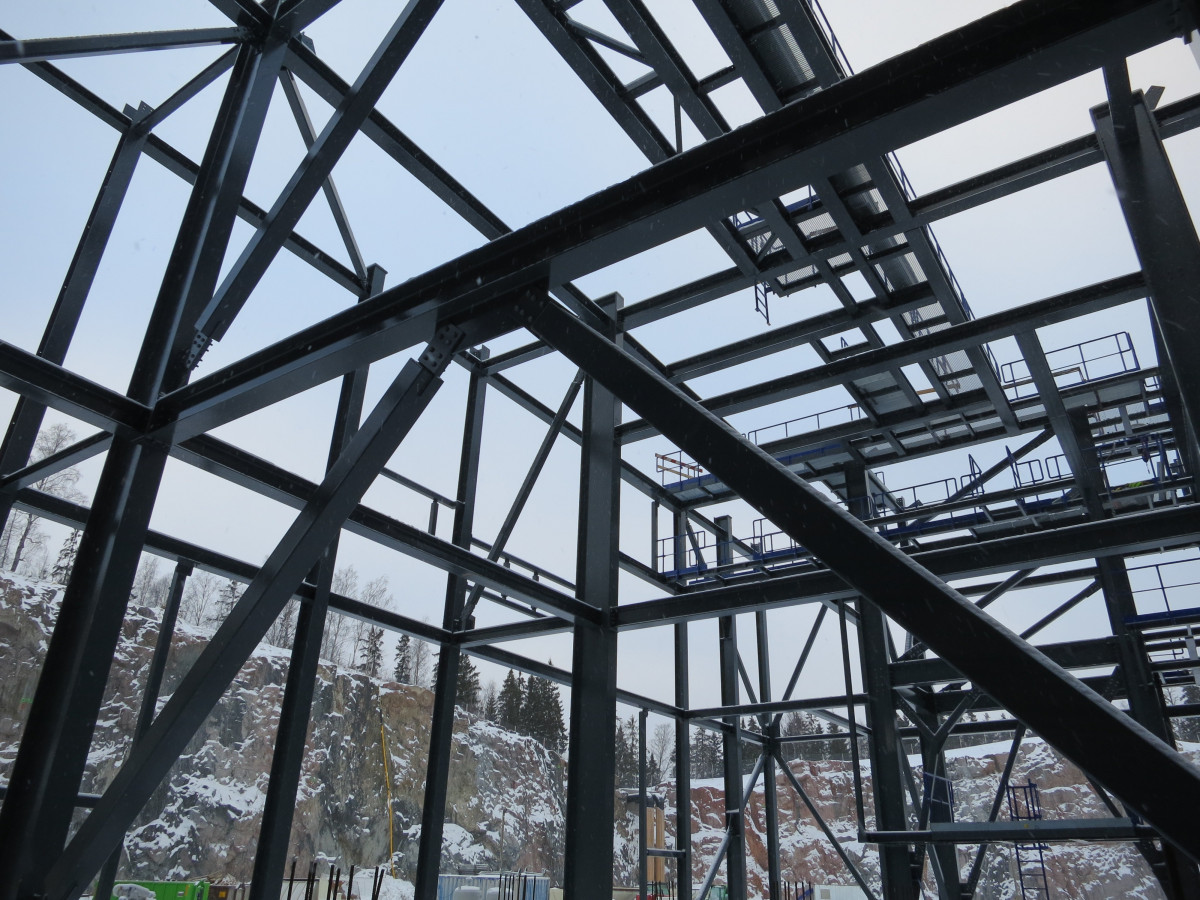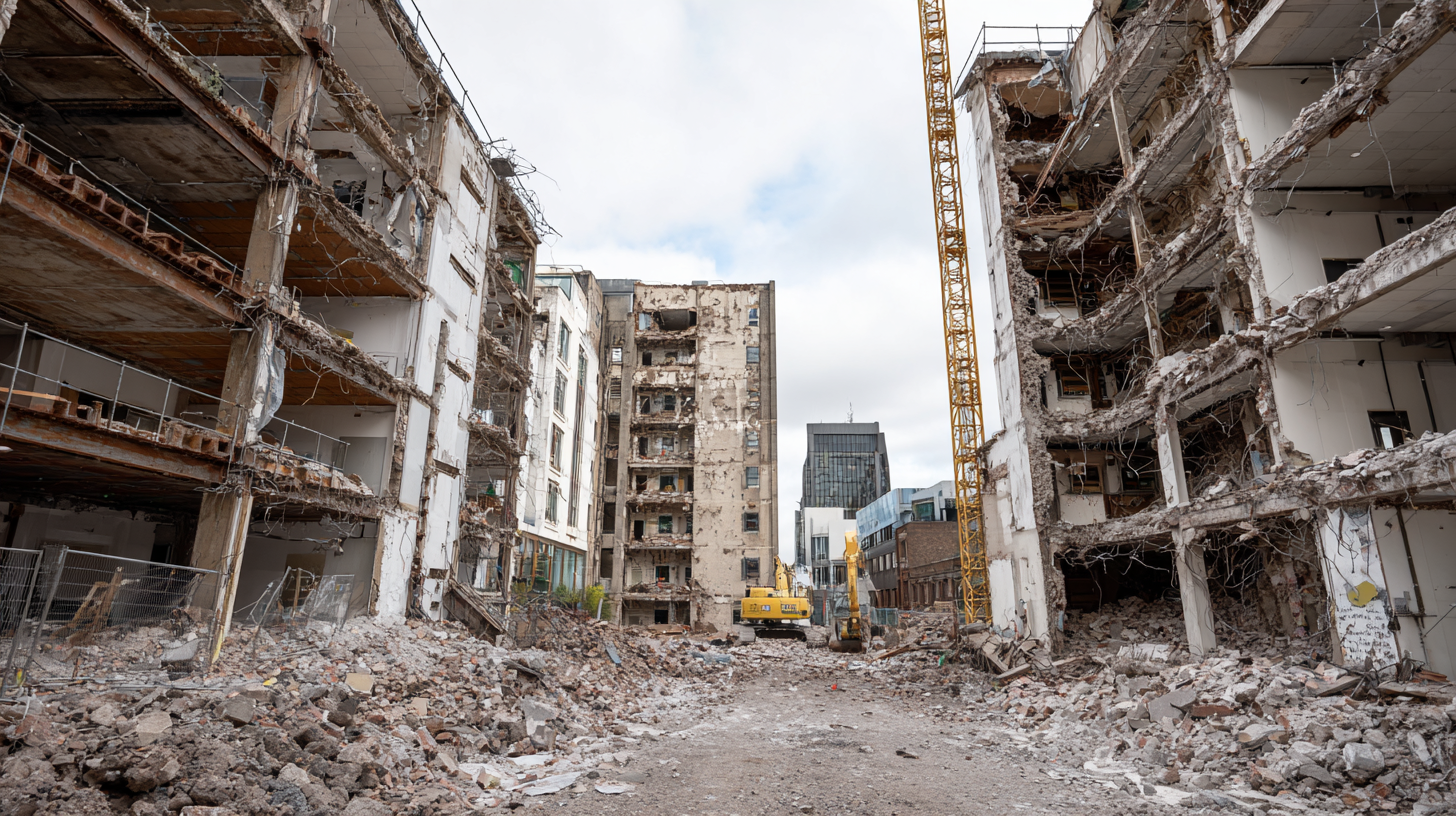🏢 Specialists In All Sector-Specific Strip-Outs
Soft strip demolition is a critical phase in many construction and refurbishment projects, especially when it comes to preparing buildings for a change of use, redesign, or full structural renovation. Among the most important areas of soft demolition work are sector-specific strip-outs, which require a tailored approach based on the building type, usage, and operational sensitivities. From commercial offices and bustling retail units to large industrial spaces and residential interiors, each environment brings unique challenges. This is where experienced soft demolition contractors shine—by applying precise, efficient, and safe removal methods that suit the specific demands of each sector.
Office strip-outs are among the most common types of soft demolition projects in urban and commercial centres. These spaces typically require the careful removal of desks, cubicle systems, partition walls, raised access flooring, suspended ceilings, and extensive electrical and data cabling. In many cases, offices are being reconfigured to suit hybrid working models or repurposed entirely for different businesses. The challenge lies in stripping back the space while preserving key structural components such as columns, concrete slabs, and permanent walls. Additionally, sensitive systems like server rooms or data centres may need specialist handling to ensure proper disconnection, safe removal, and compliance with IT decommissioning standards. Office strip-outs often occur in multi-tenant buildings, which means noise and disruption must be minimised to avoid impacting other businesses operating in the same space.
Retail and hospitality strip-outs offer a different set of logistical and aesthetic challenges. Shops, bars, restaurants, and cafes often feature intricate interior designs, custom-built counters, heavy kitchen equipment, and a mix of high-end materials that require careful deconstruction. These environments are also frequently located in high-footfall areas such as high streets, shopping centres, or transportation hubs, so contractors must work within restricted hours or alongside other trades. Soft demolition specialists are tasked with removing internal fittings, bar structures, shelving, signage, flooring, and kitchen infrastructure like extractor hoods, sinks, and cold storage units. In hospitality venues, health and safety standards must be strictly followed, particularly when dealing with grease traps, gas lines, and heavy appliances. Because many of these businesses undergo routine refurbishment or rebranding, the ability to perform clean, fast, and precise strip-outs is essential to help clients meet tight opening deadlines.
In the industrial and warehousing sector, strip-out projects are often large in scale and complexity. Facilities such as manufacturing plants, logistics centres, and workshops may house mezzanine floors, heavy-duty racking systems, conveyor belts, plant rooms, electrical sub-stations, and ducting systems. These elements are not only bulky and weighty but may also be connected to live utilities or involve hazardous substances like oils, coolants, or chemicals. Soft strip contractors working in these environments must be capable of coordinating closely with health and safety officers, structural engineers, and environmental consultants to ensure compliant dismantling. Often, these spaces require phased strip-outs to keep parts of the facility operational or to isolate areas undergoing redevelopment. Equipment may need to be decontaminated and disposed of in accordance with waste handling regulations, and all work must be completed without compromising the integrity of the building shell or affecting neighbouring units in a shared industrial estate.
Residential soft demolition focuses on the internal deconstruction of houses, flats, and apartment blocks while preserving external walls, load-bearing elements, and building services. These projects typically involve the removal of kitchens, bathrooms, built-in wardrobes, internal doors, timber stud partitions, floor coverings, ceilings, and decorative finishes such as tiles and panelling. While smaller in scale than commercial jobs, residential strip-outs demand a high level of care, especially in period properties or conversions where heritage elements must be preserved or where materials like lead paint and asbestos may still be present. In multi-unit dwellings, soft strip teams often work around occupied areas or in coordination with property managers to maintain access and safety. The goal is always to leave the interior clean, clear, and ready for the next phase of refurbishment, whether that’s a full-scale renovation, new tenant installation, or complete rebuild behind retained facades.
Across all these sectors, soft strip demolition is a specialist service that sets the tone for the success of the wider project. It is not simply about removing materials—it is about doing so in a way that is methodical, safe, and sustainable. Soft demolition contractors who understand the specific needs of offices, retail outlets, industrial sites, and homes are invaluable partners for architects, developers, and contractors. Their expertise ensures that structures are sensitively prepared for transformation, with minimal disruption, maximum resource recovery, and full regulatory compliance. As buildings across the UK continue to evolve in response to new economic and environmental demands, sector-specific soft strip services will remain essential to shaping spaces that are fit for the future.
FAQ: 📘 Sector-Specific Soft Strip Demolition
1. What is soft strip demolition?
Soft strip demolition is the removal of non-structural elements inside a building, such as internal walls, ceilings, floor finishes, fixtures, and mechanical and electrical systems, while retaining the core structural components. It is commonly used to prepare a site for refurbishment or full demolition.
2. How is soft strip demolition different from hard demolition?
Soft strip focuses on interior, non-structural elements. Hard demolition involves the structural dismantling of the building itself, including load-bearing walls, foundations, and external façades. Soft strip is often the first phase before hard demolition begins.
3. What does an office strip-out typically involve?
Office strip-outs usually include removal of desks, IT cabling, partitions, suspended ceilings, lighting, raised access flooring, and mechanical systems like HVAC. It may also include secure removal of data rooms or server cabinets.
4. What’s included in a retail or hospitality strip-out?
These projects include removing counters, bars, kitchen equipment, shelving, signage, decorative fixtures, flooring, and utility systems. Grease traps, gas lines, and back-of-house kitchens are common focus points in hospitality spaces.
5. How do industrial strip-outs differ from commercial ones?
Industrial strip-outs often deal with heavier machinery, mezzanine floors, ducting, plant rooms, and even hazardous materials. They typically require more technical expertise, larger equipment, and strict compliance with health and safety laws.
6. Can soft strip services be phased to reduce disruption?
Yes. Experienced contractors like SoftStripContractors.co.uk can carry out phased soft strip works, allowing parts of the building to remain operational while work is underway elsewhere—ideal for commercial or industrial sites.
7. What is removed during a residential soft strip?
In homes or apartment blocks, a soft strip-out may include removing kitchens, bathrooms, carpets, internal doors, plasterboard walls, and fittings. It can be tailored to full or partial refurbishments.
8. Is a site survey necessary before beginning soft demolition?
Absolutely. A full site survey helps identify structural components to retain, locate utilities, assess risks (like asbestos), and develop a tailored plan for safe, efficient removal.
9. How long does a typical soft strip project take?
The duration depends on the size and complexity of the building. A small office strip-out might take a few days, while large-scale industrial or multi-storey projects could span several weeks.
10. Are soft strip contractors responsible for waste disposal?
Yes. Professional soft demolition companies handle all waste collection, segregation, recycling, and disposal in accordance with UK environmental regulations.
11. Is asbestos a concern during strip-outs?
Yes, especially in older buildings. If asbestos is suspected, a survey must be carried out, and licensed professionals should manage any removal. Soft strip contractors can coordinate this.
12. Can soft strip services be done in occupied buildings?
Yes, but this requires careful planning to minimise disruption, control dust and noise, and ensure health and safety for occupants. This is common in office and retail refurbishments.
13. Do soft strip contractors disconnect utilities?
Yes, part of the process includes isolating and safely disconnecting gas, electric, water, and data systems before physical removal begins.
14. Is it possible to reuse or recycle materials from a strip-out?
Definitely. One of the goals of a soft strip is to recover materials that can be reused or recycled, such as metal, wood, lighting, and cabling. This supports a more sustainable construction process.
15. What kind of clients typically hire soft strip services?
Clients include commercial landlords, developers, retail chains, industrial facility managers, housing associations, contractors, and architects preparing for refurbishments or new builds.

